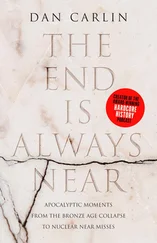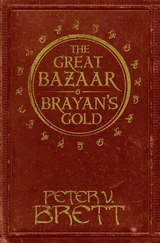Most of us were encouraged, as children, to leave this tangle unexamined. If you made fun of your little brother for coloring people green in his coloring book, your mother was likely to tell you something like "you like to do it your way and he likes to do it his way."
Your mother at this point was not trying to teach you important truths about aesthetics. She was trying to get the two of you to stop bickering.
Like many of the half-truths adults tolds us, this one contradicts other things they told us. After dinning into you that taste is merely a matter of personal preference, they took you to the museum and told you that you should pay attention because Leonardo is a great artist.
What goes through the kid's head at this point? What does he think "great artist" means? After having been told for years that everyone just likes to do things their own way, he is unlikely to head straight for the conclusion that a great artist is someone whose work is better than the others'. A far more likely theory, in his Ptolemaic model of the universe, is that a great artist is something that's good for you, like broccoli, because someone said so in a book.
Saying that taste is just personal preference is a good way to prevent disputes. The trouble is, it's not true. You feel this when you start to design things.
Whatever job people do, they naturally want to do better. Football players like to win games. CEOs like to increase earnings. It's a matter of pride, and a real pleasure, to get better at your job. But if your job is to design things, and there is no such thing as beauty, then there is no way to get better at your job. If taste is just personal preference, then everyone's is already perfect: you like whatever you like, and that's it.
As in any job, as you continue to design things, you'll get better at it. Your tastes will change. And, like anyone who gets better at their job, you'll know you're getting better. If so, your old tastes were not merely different, but worse. Poof goes the axiom that taste can't be wrong.
Relativism is fashionable at the moment, and that may hamper you from thinking about taste, even as yours grows. But if you come out of the closet and admit, at least to yourself, that there is such a thing as good design, then you can start to study it in detail. How has your taste changed? When you made mistakes, what caused you to make them? What have other people learned about design?
Once you start to examine the question, it's surprising how much different fields' ideas of beauty have in common. The same principles of good design crop up again and again.
GOOD DESIGN IS SIMPLE. You hear this from math to painting. In math it means that a shorter proof tends to be a better one. Where axioms are concerned, especially, less is more. It means much the same thing in programming. For architects and designers, it means that beauty should depend on a few carefully chosen structural elements rather than a profusion of superficial ornament. (Ornament is not in itself bad, only when it's camouflage on insipid form.) Similarly, in painting, a still life of a few carefully observed and solidly modelled objects will tend to be more interesting than a stretch of flashy but mindlessly repetitive painting of, say, a lace collar. In writing it means: say what you mean and say it briefly.
It seems strange to have to emphasize simplicity. You'd think simple would be the default. Ornate is more work. But something seems to come over people when they try to be creative. Beginning writers adopt a pompous tone that doesn't sound anything like the way they speak. Designers trying to be artistic resort to swooshes and curlicues. Painters discover that they're expressionists. It's all evasion. Underneath the long words or the "expressive" brush strokes, there's not much going on, and that's frightening.
When you're forced to be simple, you're forced to face the real problem. When you can't deliver ornament, you have to deliver substance.
GOOD DESIGN IS TIMELESS. In math, every proof is timeless unless it contains a mistake. So what does Hardy mean when he says there is no permanent place for ugly mathematics? He means the same thing Kelly Johnson did: if something is ugly, it can't be the best solution. There must be a better one, and eventually someone else will discover it.
Aiming at timelessness is a way to make yourself find the best answer: if you can imagine someone surpassing you, you should do it yourself. Some of the greatest masters did this so well that they left little room for those who came after. Every engraver since Dürer suffers by comparison.
Aiming at timelessness is also a way to evade the grip of fashion. Fashions almost by definition change with time, so if you can make something that will still look good far into the future, then its appeal must derive more from merit than fashion.
Strangely enough, if you want to make something that will appeal to future generations, one way to do it is to try to appeal to past generations. It's hard to guess what the future will be like, but we can be sure it will be like the past in caring nothing for present fashions. So if you can make something that appeals to people today and would also have appealed to people in 1500, there is a good chance it will appeal to people in 2500.
GOOD DESIGN SOLVES THE RIGHT PROBLEM. The typical stove has four burners arranged in a square, and a dial to control each. How do you arrange the dials? The simplest answer is to put them in a row. But this is a simple answer to the wrong question. The dials are for humans to use, and if you put them in a row, the unlucky human will have to stop and think each time about which dial matches which burner. Better to arrange the dials in a square like the burners.
A lot of bad design is industrious, but misguided. In the mid twentieth century there was a vogue for setting text in sans-serif fonts. These fonts are closer to the pure, underlying letterforms. But in text that's not the problem you're trying to solve. For legibility it's more important that letters be easy to tell apart. It may look Victorian, but a Times Roman lowercase g is easy to tell from a lowercase y.
Problems can be improved as well as solutions. In software, an intractable problem can usually be replaced by an equivalent one that's easy to solve.
Physics progressed faster as the problem became predicting observable behavior, instead of reconciling it with scripture.
GOOD DESIGN IS SUGGESTIVE. Jane Austen's novels contain almost no description; instead of telling you how everything looks, she tells her story so well that you envision the scene for yourself. Likewise, a painting that suggests is usually more engaging than one that tells. Everyone makes up their own story about the Mona Lisa.
Figure 9-1. 1973 Porsche 911E.

In architecture and design, this principle means that a building or object should let you use it as you want: a good building, for example, will serve as a backdrop for whatever life people want to lead in it, instead of making them live as if they were executing a program written by the architect.
In software, it means you should give users a few basic elements that they can combine as they wish, like Lego. In math it means a proof that becomes the basis for a lot of new work is preferable to one that was difficult, but doesn't lead to future discoveries. In the sciences generally, citation is considered a rough indicator of merit.
GOOD DESIGN IS OFTEN SLIGHTLY FUNNY. This one may not always be true. But Dürer's engravings and Saarinen's Womb Chair and the Pantheon and the original Porsche 911 all seem to me slightly funny. Gödel's incompleteness theorem seems like a practical joke.
Читать дальше













